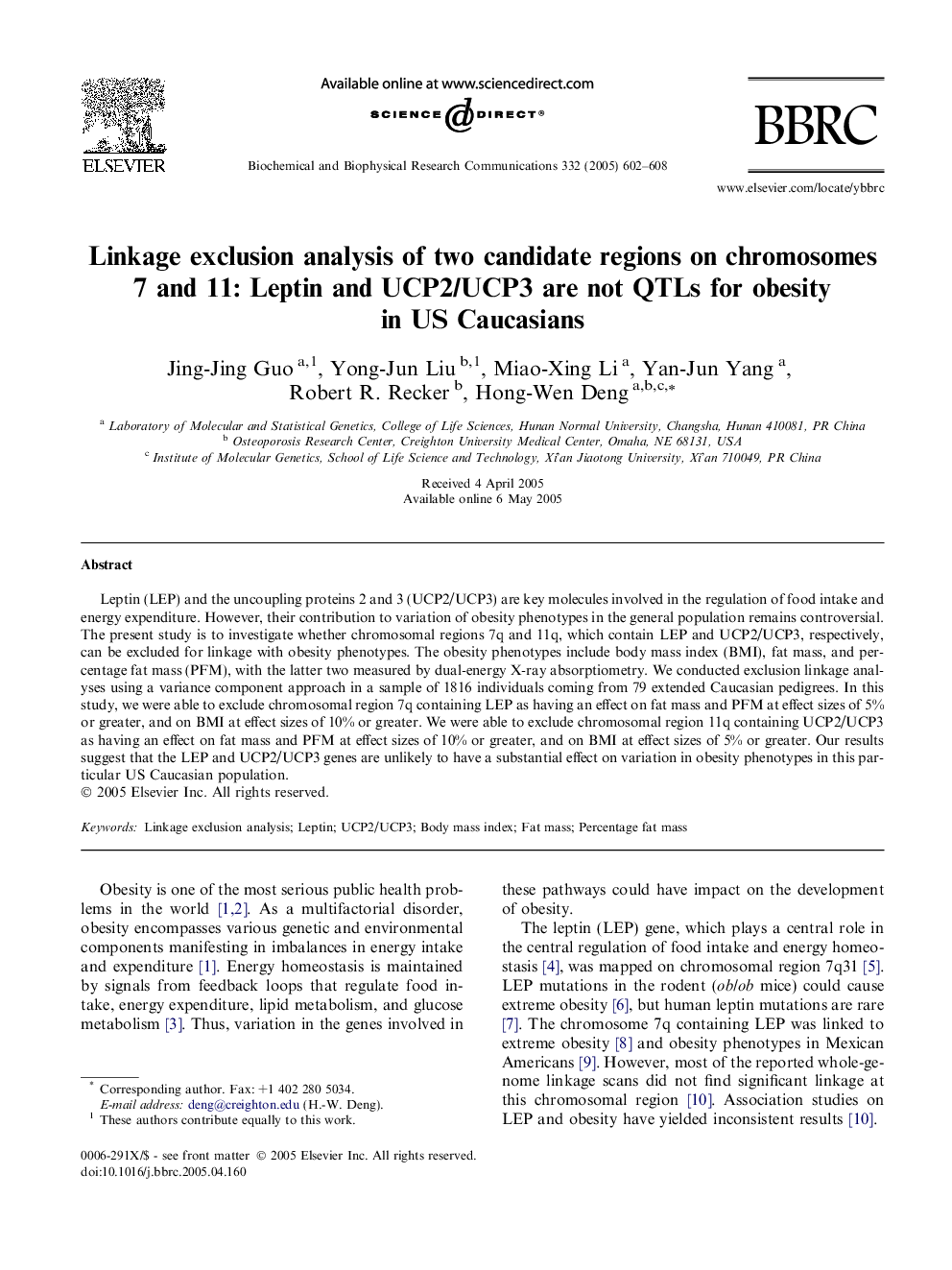| Article ID | Journal | Published Year | Pages | File Type |
|---|---|---|---|---|
| 10768540 | Biochemical and Biophysical Research Communications | 2005 | 7 Pages |
Abstract
Leptin (LEP) and the uncoupling proteins 2 and 3 (UCP2/UCP3) are key molecules involved in the regulation of food intake and energy expenditure. However, their contribution to variation of obesity phenotypes in the general population remains controversial. The present study is to investigate whether chromosomal regions 7q and 11q, which contain LEP and UCP2/UCP3, respectively, can be excluded for linkage with obesity phenotypes. The obesity phenotypes include body mass index (BMI), fat mass, and percentage fat mass (PFM), with the latter two measured by dual-energy X-ray absorptiometry. We conducted exclusion linkage analyses using a variance component approach in a sample of 1816 individuals coming from 79 extended Caucasian pedigrees. In this study, we were able to exclude chromosomal region 7q containing LEP as having an effect on fat mass and PFM at effect sizes of 5% or greater, and on BMI at effect sizes of 10% or greater. We were able to exclude chromosomal region 11q containing UCP2/UCP3 as having an effect on fat mass and PFM at effect sizes of 10% or greater, and on BMI at effect sizes of 5% or greater. Our results suggest that the LEP and UCP2/UCP3 genes are unlikely to have a substantial effect on variation in obesity phenotypes in this particular US Caucasian population.
Keywords
Related Topics
Life Sciences
Biochemistry, Genetics and Molecular Biology
Biochemistry
Authors
Jing-Jing Guo, Yong-Jun Liu, Miao-Xing Li, Yan-Jun Yang, Robert R. Recker, Hong-Wen Deng,
